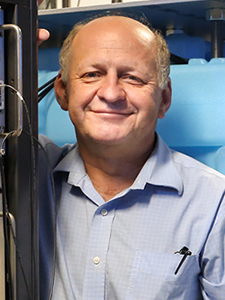
Neutrinos are notoriously difficult to detect. Usually neutrino detectors are massive on a scale from tons to kilotons. However, due to their ability to penetrate vast amount of material without interactions, they can be used as probes of processes which are inaccessible by any other means. For example, it could be the dynamics inside stellar inferiors, stellar explosions or nuclear reactors. In addition, all neutrino properties cannot be explained in the Standard Model of electro-magnetic interactions (SM).
Recently, the COHERENT collaboration, using the intense neutrino flux from the Spallation Neutron Source, detected a new type on neutrino interaction Coherent Elastic neutrino Nucleus Scattering (CEvNS) using a purpose-built 14 kg CsI crystal. It was quoted in literature as “the first hand held neutrino detector”. This was possible because the CEvNS interaction cross section is a factor of 100 to 1000 larger than any other known neutrino interaction cross sections.
Detection of CEvNS is very difficult task requiring registering faint signals from tiny nuclear recoils. Recent progress in low threshold and extremely radio pure detectors makes the detection of CEvNS a possibility. Presently we are working on an extension of CEvNS detection from one detector technology to many. This will allow us to carefully test predictions of the SM and study new neutrino detection technologies. Neutrino Alley at the SNS in combination with the incredibly intense pulsed neutrino flux from the SNS creates the ideal conditions for such research.
Researchers

Professor
UT Department of Physics & Astronomy

Group Leader Neutrino Research
ORNL Physical Sciences Division
Recent Highlights
-
Compelling Evidence of Neutrino Process Opens Physics Possibilities
The COHERENT particle physics experiment at the Department of Energy’s Oak Ridge National Laboratory has firmly established the existence of a new kind of neutrino interaction. Because neutrinos are electrically neutral and interact only weakly with matter, the quest to observe this interaction drove advances in detector technology and has added new information to theories… Continue Reading →
-
World’s Smallest Neutrino Detector Finds Big Physics Fingerprint
After more than a year of operation at the Department of Energy’s (DOE’s) Oak Ridge National Laboratory (ORNL), the COHERENT experiment, using the world’s smallest neutrino detector, has found a big fingerprint of the elusive, electrically neutral particles that interact only weakly with matter. Continue Reading →